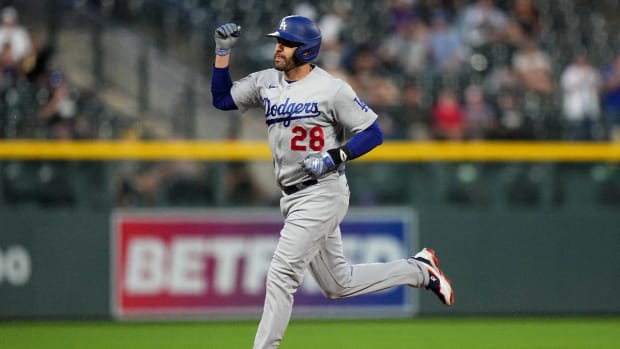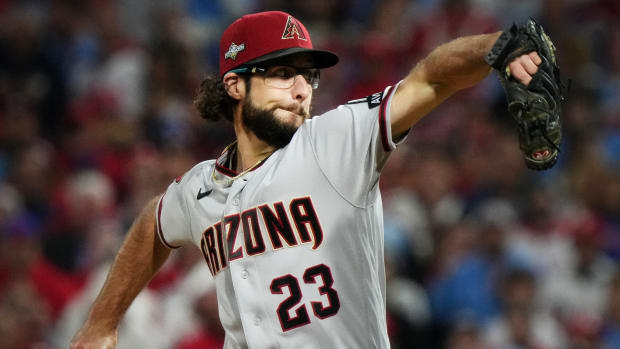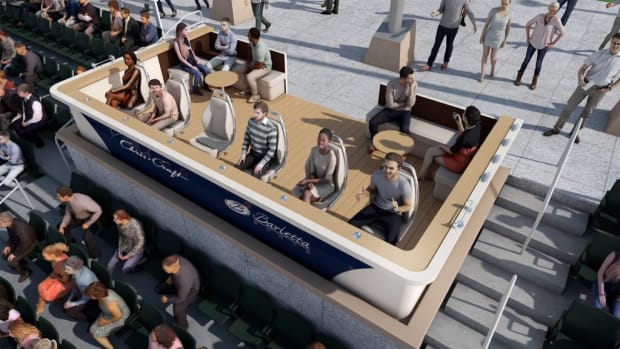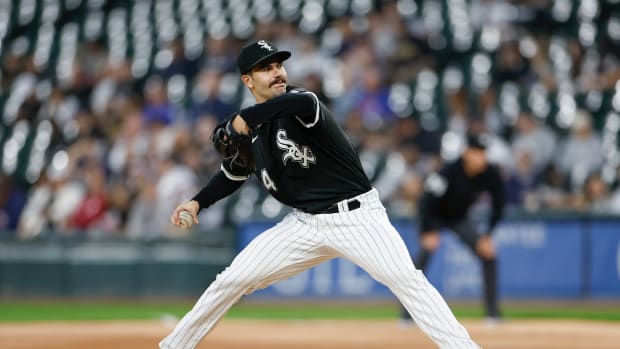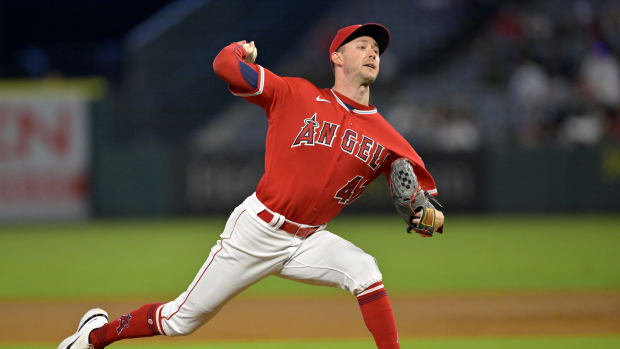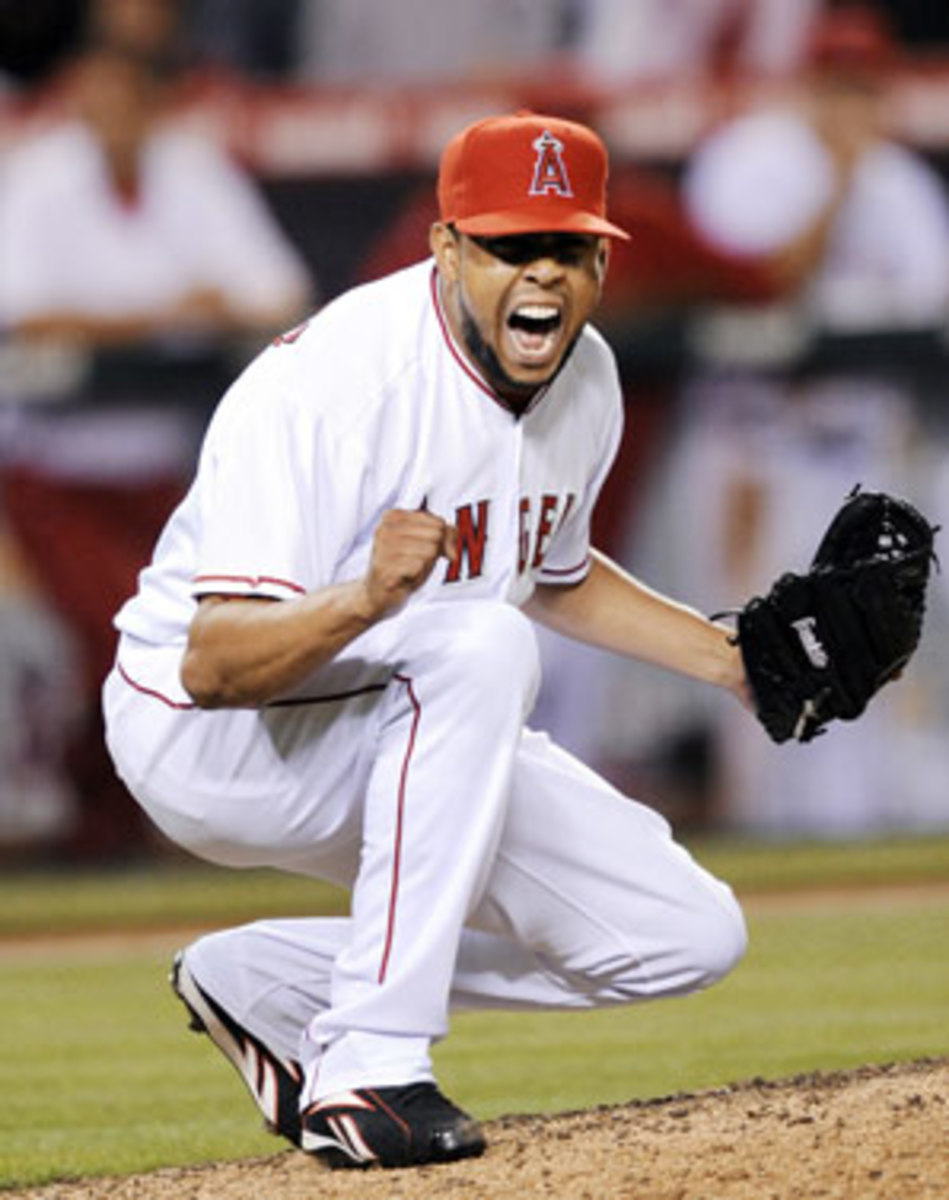
Mets score big with K-Rod deal
The signing addresses the most glaring weakness of a club that came up short of the playoffs on the final day of the season for the second year in a row. It brings the former Angels hurler, who broke BobbyThigpen's 18-year-old single-season saves record this past year with an eye-popping 62, to the Big Apple on a shorter and much less expensive deal than he had previously sought. This is a very good deal for Mets GM Omar Minaya.
As a unit, the Mets ranked 15th in the National League and 24th in the majors in Reliever Expected Wins Added, by far the lowest ranking of any playoff contender. With 4.9 WXRL, their total would have ranked among the 10 worst of any postseason team since 1988, a year chosen to represent the dawn of the one-inning closer era. By contrast, the two pennant winners, the Rays and Phillies, led their leagues with 15.4 and 15.2 WXRL, respectively. Rodriguez's AL West-winning Angels were fourth at 13.3. None of the eight teams that made the postseason was ranked lower than 16th (Boston) this year. Having a good bullpen isn't a requirement for a playoff team, but it certainly helps.
The Mets' season took a turn for the worse on Aug. 2, when closer Billy Wagner blew a 4-2 ninth-inning lead by allowing four of the first five Astros hitters to reach base, resulting in his seventh blown save of the year. Within a week the 36-year-old lefty went on the disabled list with what was reported as a recurrent strain in his forearm. A month later, just after he returned to throwing at full velocity, he was discovered to have a torn ulnar collateral ligament that required Tommy John surgery, costing him the rest of 2008 and likely all of 2009, the final year of his four-year, $43 million deal.
The Mets' problem was that they lacked a quality reliever to step up and assume the closer role thanks to a bullpen worn to the nub by overuse and platoon-based specialization. Top setup men Aaron Heilman and Duaner Sanchez both had ERAs above 6.00 after the All-Star break, and of the six relievers that interim manager Jerry Manuel called upon most often in the second half, five had ERAs above 4.50. Manuel used five different pitchers to close out ball games after Wagner went down, with Luis Ayala, a waiver-period acquisition from the Nationals, notching nine of the team's 16 saves in that span but also blowing three others (all losses) and allowing an insurance run in a game the Mets trailed 3-2 in the eighth on the final day of the season. In all, the Mets lost 29 ball games in which they led or were tied through six innings, partly a function of opportunity (they played more games in which they were ahead or tied after six than any team) and partly a failure to execute (they were 6-16 when tied after six).
So the Mets needed a closer. The question is how well they did in landing this particular one. Rodriguez was far from the only name brand closer in a crowded market, one that includes all-time saves leader Trevor Hoffman, three-time All-Star Brian Fuentes, and former Cubs All-Star Kerry Wood. There's also a bargain tier of damaged-goods misfits like Jason Isringhausen, Chad Cordero and Eric Gagne for those willing to take on more risk. Additionally, the Mariners' J.J. Putz and the Rockies' Huston Street, recently acquired from the A's in the Matt Holliday deal, are names that have repeatedly surfaced in trade rumors this winter.
Nearly all of those pitchers have dealt with a major injury at least once in the past few years, and aside from the 41-year-old Hoffman, who's in the twilight of his career and facing a move from a very pitcher-friendly ballpark, none offers a recent track record as strong as K-Rod's. In fact, since 2003, his first full season, Rodriguez ranks third in the majors in WXRL, a stat which does a much better job of gauging a reliever's value than mere save totals, because it accounts for the inning-score-baserunner combo a pitcher inherits when he comes into a game, and quite rightly dishes out credit to relievers who may pitch more crucial situations prior to the ninth inning:
FRA is Fair Run Average, the number of runs (earned or not) per nine innings that a pitcher allowed after accounting for his performance in dealing with inherited runners. That's a blind spot for traditional ERA calculations, though it matters more for pitchers who enter the game mid-inning than it does for your typical ninth-inning specialist.
On that topic, it's worth noting that entering mid-inning is something Rodriguez rarely does. Since 2005, his first full year as closer, he has notched just 11 long saves (four outs or more), while Rivera has racked up 34 such saves (no other pitcher has more than 22). In fact, none of K-Rod's record-setting 2008 total of 62 saves was longer than an inning, while eight of them were less than an inning. There's a whole sermon that could be made here about the way the current generation of managers errs on the side of caution by utilizing their closers only in the ninth inning and often with bigger leads than even a scrub could manage to blow, while at the same time entrusting more crucial late-inning situations to less-talented setup men. Luckily for the Angels and manager Mike Scioscia, they've had one of the best in Scott Shields over the span of Rodriguez's tenure as closer
The saves record itself simply isn't that impressive. It's a function of circumstance, namely the need for close ball games. The Angels, with an excellent pitching staff but only a so-so offense, were ideally suited to providing Rodriguez with more save opportunities than your average team, by playing close games; of their 100 wins, 71 were in games decided by three runs or less. From a sabermetric standpoint, it's more impressive that Rodriguez finished second in the AL in WXRL with 5.6. Even so, he posted a higher total in 2007, when he led the league with 7.3. He led the league with 5.6 in 2006 as well. His 2008 performance was garden-variety K-Rod, which is kind of the point: He's a proven commodity.
As for the price tag on Rodriguez, three years and $37 million sounds quite reasonable given that he turned down a three-year, $33 million deal from the Angels in the spring and entered the offseason reportedly seeking a gargantuan five-year, $75 million deal. Obviously, the current economic climate, the slow free-agent market, and the relative plethora of available closer options appear to have suppressed Rodriguez's asking price.
The contract appears to be slightly below market in terms of the current big-dollar closer deals. It comes in well below the three-year, $45 million contract that Rivera signed last winter in terms of its average annual value. It's on par with the three-year, $37.5 million extension that Brad Lidge signed with the Phillies in July, though Lidge's deal includes a $12.5 million club option and $1.5 million buyout for the fourth year, whereas no option or other embellishment has been reported for Rodriguez's deal. It's also a shorter commitment than the four-year, $47 million extension that Joe Nathan got from the Twins back in the spring and the four-year, $46 million deal pact that the much-less-established Francisco Cordero received from the Reds last winter, to say nothing of the five-year, $47 million deal that B.J. Ryan signed with the Blue Jays three years ago. As the Ryan and Wagner deals remind, it's entirely possible for a reliever to lose a year to Tommy John surgery at a cost of $10 million or more. That can wreck a team's budget in a hurry.
The short deal works both ways. It minimizes the Mets' exposure to injury risk, something that any critic of Rodriguez's violent mechanics might be relieved to see, though it's worth noting that the pitcher's springtime ankle injury led to some tweaks in his delivery that cost him a little velocity but lowered the stress on his arm, which should help him in the long run. The deal also gets the going-on-27-year-old closer back to the market sooner rather than later, with the chance at another big payday before his 30th birthday, likely in a more hospitable economic climate.
As to whether this deal can be the difference-maker for the Mets, it's certainly a step in the right direction, but it's also really just one piece in a puzzle. Given the unimpressive showings by Heilman and Sanchez, they still need to revamp their setup corps, though whether they do so by signing a setup man such as Juan Cruz -- as colleague Joe Sheehan advocated earlier this week -- dipping into the bargain bin or making a trade or two remains to be seen. Oliver Perez and Pedro Martinez need to be replaced in the rotation; DerekLowe would be a fit, as he would be for just about any contender in need of 200 high-quality innings with a low injury risk, but there's plenty of competition for his services. Additionally, the Mets need to bolster their production from the outfield corners, where they dealt with an incessant parade of injuries last year. Upgrades at catcher and/or second base would help their chances as well, but those are lower priorities.
One can't expect a GM to solve all of his team's problems with a single transaction. While Minaya didn't exactly think outside the box in pursuing the biggest name on the market when it came to closers, he closed the deal, and at a reasonable price to boot.






























